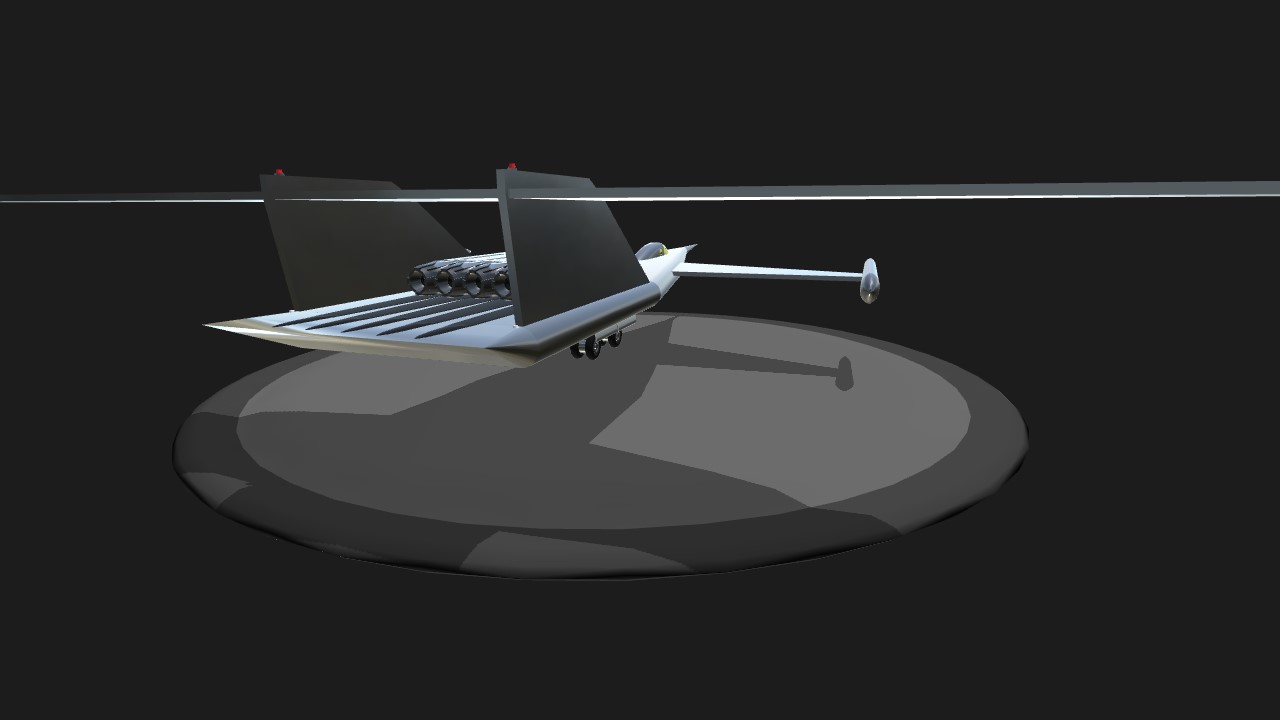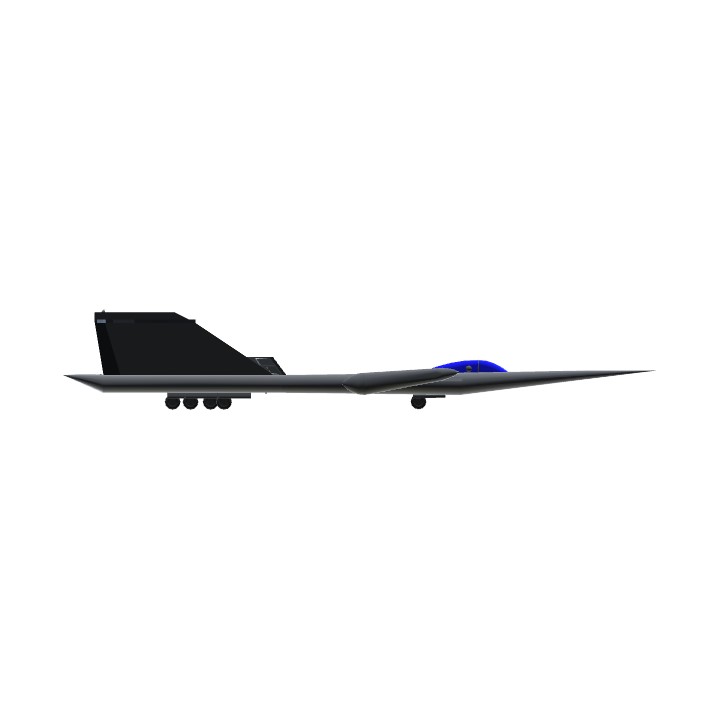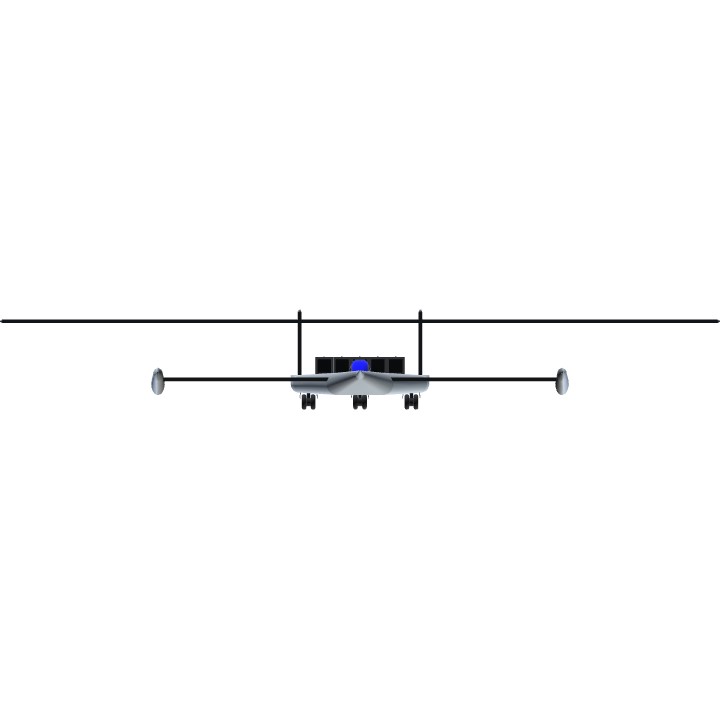( English version at the bottom of the page )
Pour le reveillon , je vous propose en appéritif un petit Bartini ............ sans glaçons .
Voici un résumé de la vie trés productive de Robert Bartini . Le modéle que je vous presente et réalisé a partir
d'un dessin trouvé sur le web . Ce prototype est amphibie . Décollage Trim a fond .
Robert Ludvigovich Bartini (14 mai 1897 - 6 décembre 1974) est un ingénieur aéronautique et un scientifique
reconnu en matière de dynamique des fluides. D’origine italienne, il a effectué sa carrière en Union soviétique, où
il a émigré en 1923 pour des motifs politiques . Aprés une périodes de disgrace et un passage au goulag , il a été interné
à Moscou puis à Omsk entre 1940 et 1943 , il a été libéré en 1946 . il rejoint le bureau d’études de la firme Beriev à
Taganrog, puis en 1952 l'institut sibérien de recherches aéronautiques SibNIA de Novossibirsk, où il effectue de nombreux
travaux sur le vol supersonique et dessine le T-203, caractérisé par une aile à flèche évolutive, puis un bombardier
stratégique supersonique désigné A-57.
Finalement réhabilité en 1956, il regagne Moscou, où il dispose chez Kamov d’un bureau lui permettant d’étudier un amphibie
à décollage et atterrissage vertical. Le programme MVA-62 est interrompu en 1963, mais la plupart de ses éléments sont repris
dans le projet VVA-14, un aéronef à effet de sol destiné à la lutte anti-sous-marine construit par Beriev sous la direction
de Robert Bartini. À partir de l’expérience acquise avec les deux prototypes du VVA-14, il dessine encore des Libéré en 1946, il
rejoint le bureau d’études de la firme Beriev à Taganrog, puis en 1952 l'institut sibérien de recherches aéronautiques SibNIA
de Novossibirsk, où il effectue de nombreux travaux sur le vol supersonique et dessine le T-203, caractérisé par une aile à flèche
évolutive, puis un bombardier stratégique supersonique désigné A-57. Finalement réhabilité en 1956, il regagne Moscou, où il
dispose chez Kamov d’un bureau lui permettant d’étudier un amphibie à décollage et atterrissage vertical. Le programme MVA-62
est interrompu en 1963, mais la plupart de ses éléments sont repris dans le projet VVA-14, un aéronef à effet de sol destiné
à la lutte anti-sous-marine construit par Beriev sous la direction de Robert Bartini. À partir de l’expérience acquise avec
les deux prototypes du VVA-14, il dessine encore des ekranoplans géants pouvant atteindre 2 500 tonnes ou participe à la
conception de trains à sustentation magnétique.
Robert Bartini est décédé à Moscou le 6 décembre 1974. Au total, il a contribué à plus de 60 projets d’aéronefs.
Son nom est fréquemment associé à ceux de Sergueï Iliouchine, Oleg K. Antonov, Vladimir Miassichtchev ou Aleksander Yakovlev,
mais surtout Sergueï Korolev, qui fait référence à Bartini comme à son mentor .
Bartini était productif, très productif, donc généreux. Ses idées étaient très en avance sur son
temps, ce qui explique qu’une faible partie seulement aient conduit à réalisation. Mais même ses
idées n’ayant pas conduit à réalisation furent un catalyseur
pour le progrès de nos techniques aéronautiques.
Commande :
1 2 3 réacteurs .
4 feux positions .
5 feux d'atterrissages .
7 Parachute de queue .
Trim .
English version :
For the reveillon, I propose to you in aperitif a small Bartini ............ without ice cubes.
Here is a summary of the very productive life of Robert Bartini. The model that I present to you and realized from
a drawing found on the web. This prototype is amphibious. Take off Trim thoroughly.
Robert Ludvigovich Bartini (14 May 1897 - 6 December 1974) is an aeronautical engineer and a scientist
recognized in fluid dynamics. Of Italian origin, he made his career in the Soviet Union, where
he emigrated in 1923 for political reasons. After a period of disgrace and a passage to the gulag, he was interned
in Moscow and Omsk between 1940 and 1943, he was released in 1946. he joined the design office of the firm Beriev in
Taganrog, then in 1952 the Siberian Institute of Aeronautical Research SibNIA of Novosibirsk, where he carries out numerous
work on the supersonic flight and draws the T-203, characterized by a wing with evolutionary arrow, then a bomber
Strategic Supersonic A-57.
Finally rehabilitated in 1956, he returned to Moscow, where he had at Kamov an office to study an amphibian
takeoff and vertical landing. The MVA-62 program was interrupted in 1963, but most of its elements were taken over
in the VVA-14 project, a ground effect aircraft for anti-submarine warfare built by Beriev under the direction of
from Robert Bartini. From the experience gained with the two prototypes of the VVA-14, he still draws Libéré in 1946, he
joined the research firm of the firm Beriev in Taganrog, then in 1952 the Siberian institute for aeronautical research SibNIA
of Novosibirsk, where he carries out many works on supersonic flight and draws the T-203, characterized by an arrow wing
evolutionary, then a supersonic strategic bomber designated A-57. Finally rehabilitated in 1956, he returned to Moscow, where he
Kamov has an office to study an amphibious take-off and landing vertical. The MVA-62 program
was discontinued in 1963, but most of its elements are included in Project VVA-14, a ground effect
the anti-submarine fight built by Beriev under the direction of Robert Bartini. From the experience gained with
the two prototypes of the VVA-14, he still draws giant ekranoplans of up to 2,500 tonnes or participates in the
design of magnetic levitation trains.
Robert Bartini died in Moscow on December 6, 1974. In total, he has contributed to more than 60 aircraft projects.
His name is frequently associated with those of Sergei Iliushin, Oleg K. Antonov, Vladimir Miassishchev or Aleksander Yakovlev,
but especially Sergei Korolev, who refers to Bartini as his mentor.
Bartini was productive, very productive, so generous. His ideas were way ahead of his
time, which explains why only a small part has led to realization. But even his
ideas that did not lead to realization were a catalyst
for the progress of our aeronautical techniques.
Order:
1 2 3 reactors.
4 lights positions.
5 landing lights.
7 Tail parachute.
Trim.
Specifications
Spotlights
- SledDriver 7.9 years ago
General Characteristics
- Created On Windows
- Wingspan 66.0ft (20.1m)
- Length 54.5ft (16.6m)
- Height 9.2ft (2.8m)
- Empty Weight 18,519lbs (8,400kg)
- Loaded Weight 31,328lbs (14,210kg)
Performance
- Power/Weight Ratio 1.793
- Wing Loading 41.4lbs/ft2 (202.3kg/m2)
- Wing Area 756.2ft2 (70.3m2)
- Drag Points 5219
Parts
- Number of Parts 71
- Control Surfaces 8
- Performance Cost 545
Required Mods
-
Smoke Trails
by NathanMikeska
Version 1.0 (9/13/2016 7:40:51 PM)
View Mod Page







@XEPOH , Thanks for your upvote .
@yoshicraze , thank for you upvote .
@ sxy , thank for you upvote .
@SledDriver ? Thanks for you upvote and for having spotlighted this plane .
@grizzlitn ,merci pour ton vote .
@Ezri , lol . en français dans le texte , merci ton upvote . Thank for you upvote .
Hopefully this will suffice for my french practice while there is none in the current semester lol
Np @Trainzo
Np @Trainzo
@ThePrototype , thank for you upvote .
@ThePrototype , thank for you upvote .
@Liquidfox , thanks for you upvote .
@Liquidfox , thanks for you upvote .